PUBLICATIONS
As a dance education researcher and scholar who is also an active artist, educator, and administrator, my work emerges from the complex sites where dancing and dance learning occur. The research I pursue stems from my experiences as a dance educator and artist; the questions I grapple with in the studio and classroom are often the starting point for my research and scholarship, and what I discover through my scholarship has a direct application to dance education teaching praxes. Specifically, my research and scholarship focus on dance education in a range of contexts which can be broadly categorized into three interconnected themes: ethics and equity across the spectrum of dance education, tertiary dance curricula and pedagogy, and dance competition culture.
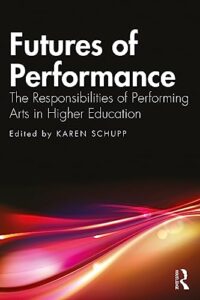
Futures of Performance: The Responsibilities of Performing Arts in Higher Education
Futures of Performance inspires both current and future artists/academics to reflect on their roles and responsibilities in igniting future-forward thinking and practices for the performing arts in higher education.
The book presents a breadth of new perspectives from the disciplines of music, dance, theatre, and mediated performance and from a range of institutional contexts. Chapters from teachers across various contexts of higher education are organized according to the three main areas of responsibilities of performing arts education: to academia, to society, and to the field as a whole. With the intention of illuminating the intricacy of how performing arts are situated and function in higher education, the book addresses key questions including: How are the performing arts valued in higher education? How are programs addressing equity? What responsibilities do performing arts programs have to stakeholders inside and outside of the academy? What are programs’ ethical obligations to students and how are those met? Futures of Performance examines these questions and offers models that can give us some of the potential answers.
This is a crucial and timely resource for anyone in a decision-making position within the university performing arts sector, from administrators, to educators, to those in leadership positions.
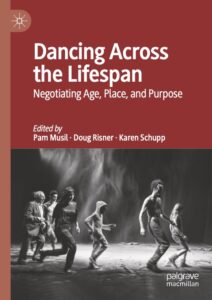
Dancing Across the Lifespan: Negotiating Age, Place, and Purpose
Co-edited with Pam Musil and Doug Risner
This book critically examines matters of age and aging in relation to dance. As a novel collection of diverse authors’ voices, this edited book traverses the human lifespan from early childhood to death as it negotiates a breadth of dance experiences and contexts. The conversations ignited within each chapter invite readers to interrogate current disciplinary attitudes and dominant assumptions and serve as catalysts for changing and evolving long entrenched views among dancers regarding matters of age and aging.

Dancing Across the Lifespan: Negotiating Age, Place, and Purpose
Co-edited with Pam Musil and Doug Risner
This book critically examines matters of age and aging in relation to dance. As a novel collection of diverse authors’ voices, this edited book traverses the human lifespan from early childhood to death as it negotiates a breadth of dance experiences and contexts. The conversations ignited within each chapter invite readers to interrogate current disciplinary attitudes and dominant assumptions and serve as catalysts for changing and evolving long entrenched views among dancers regarding matters of age and aging.
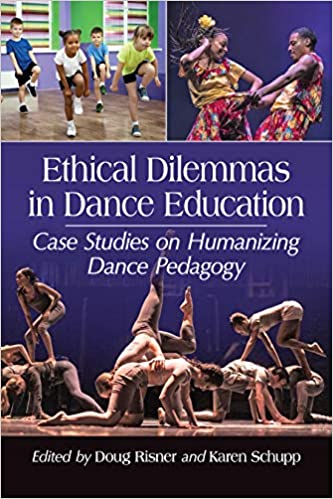
Ethical Dilemmas in Dance Education: Case Studies on Humanizing Dance Pedagogy
Co-edited with Doug Risner
The first of its kind, this volume presents research-based fictionalized case studies from experts in the field of dance education, examining theory and practice developed from real-world scenarios that call for ethical decision-making. Dilemmas faced by dance educators in the studio, on stage, in recreation centers and correctional facilities, and on social media are explored, accompanied by activities for humanizing dance pedagogy. These challenges converge from educational policies and mandates developed over the past two decades, including teacher-proof “scripted” curriculum, high-stakes testing, standardization, and methods-centered teacher preparation; difficulties are often perpetuated by those who want to make change happen but do not know how.
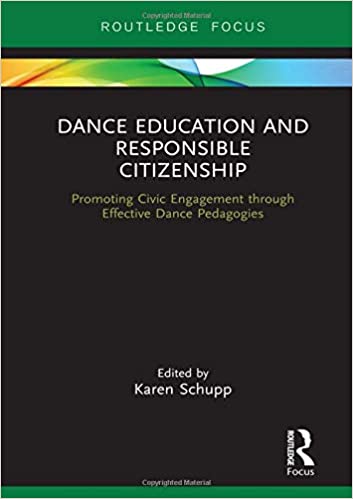
Dance Education and Responsible Citizenship: Promoting Civic Engagement Through Effective Dance Pedaogies
Originally published as a special issue of the Journal of Dance Education, this collection brings together a number of insightful chapters which explore themes relating to responsible citizenship within dance education.
Presenting research, scholarship, experiences, and pedagogical approaches from national and international contexts, and diverse educational settings, the chapters included in this book demonstrate how the study of dance requires students to develop a clear sense of self- and group-responsibility. Including high-level contributions from a range of researchers, educators, and dance instructors, the volume investigates how research and instruction can contribute to building communities; and ensure that dance education reacts to shifting social, political, and cultural norms. Responsible citizenship and civic engagement are examined in relation to course content, pedagogical approaches, systemic practices, and cultural assumptions.
This valuable collection of diverse and insightful chapters will be of great interest to researchers, post-graduate academics, teachers and instructors in the fields of dance and teacher education.
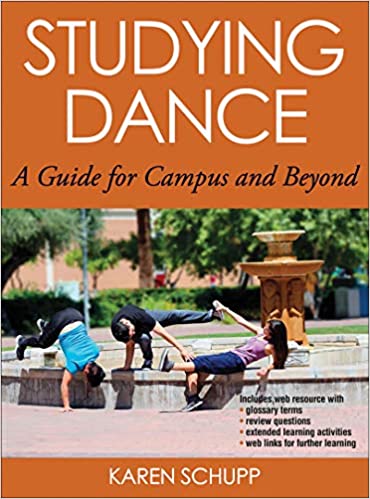
Studying Dance: A Guide for Campus and Beyond
Studying Dance: A Guide for Campus and Beyond is a comprehensive bridge for students transitioning into the first year of a college dance program. Through this text, students will understand dance in new and exciting ways, embrace it as an academic discipline, navigate and take charge of their dance education, and visualize potential careers after graduation.
Studying Dance: A Guide for Campus and Beyond opens students’ eyes to all the artistic, cultural, and educational aspects of dance. By expanding their thinking, students will move to a deeper understanding of themselves as dancers and the world around them.
The author demystifies the entire first-year experience while guiding students in the discovery of dance as a multifaceted discipline. Students will examine academic expectations, time management, the importance of staying focused, and balancing school and life. They will delve into the various areas of dance and a range of careers and paths available to them. They will learn the differences in types of college dance courses, the approaches used, and how to personalize their dance education through individualized instructional opportunities and peer collaboration. The text also will prompt students to visualize and plan their dance lives beyond campus so they can set clear goals for studying and succeeding as young professionals.
